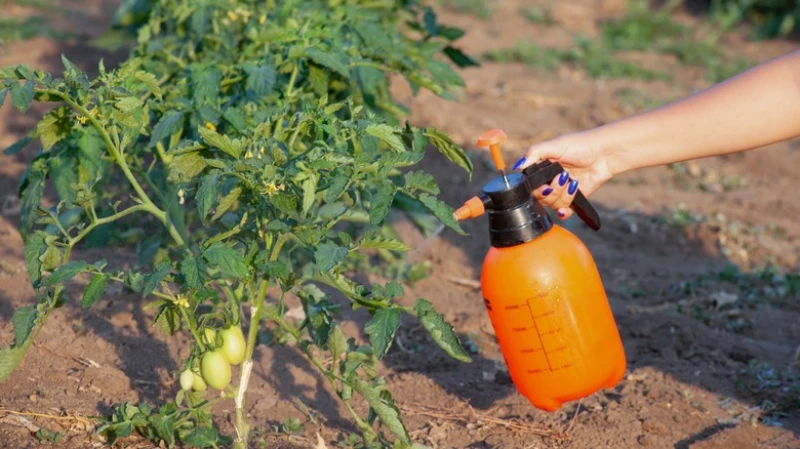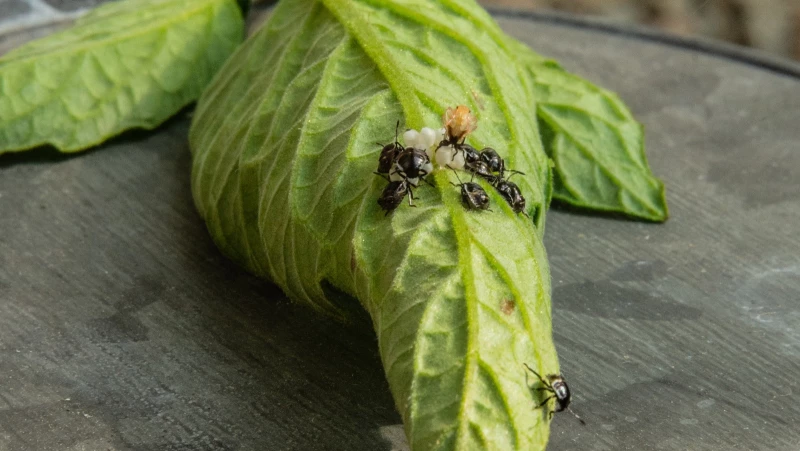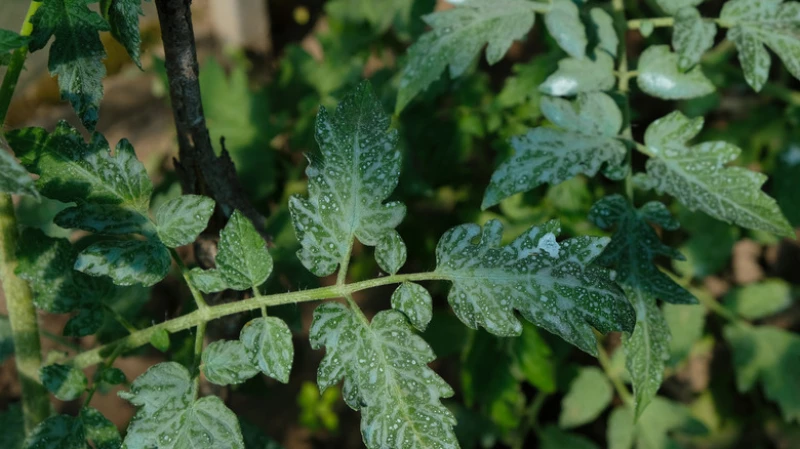Doesn't virtually every gardener fantasize about having juicy tomatoes basking in the garden? But alas, such aspirations might crumble into pieces under the merciless jaws of flea beetles. These pesky invaders derive perverse pleasure from transforming green blades into a canvas of yellowing and irregular holes. When in hefty numbers, they could leave your once healthy and vibrant tomato leaves with a sieve-like appearance that can be mistaken for a gardener's creative leaf art from afar. And while these critters might not spell doom for larger plants, never underestimate their capability to spread diseases between plants. Their mere presence is a threat. So, how do I get rid of flea beetles on my tomatoes, you ask? Well, your saving grace, quite surprisingly, could be within your pantry, medicine cabinet, or under-the-sink storage area. Behold the potent triad of isopropyl rubbing alcohol, dish soap, and water.
Keep flea beetles off tomato plants with rubbing alcohol

Your dependable armory in this fight against flea beetles on tomato plants will include isopropyl rubbing alcohol (70% solution is ideal), a spray bottle, water, dish soap, and safety gear. Rubbing alcohol can be a double-edged sword, capable of inflicting harm when mishandled. With gloves and eye protection, you won't have to fear the burn this chemical can cause upon encountering your skin or eyes.
Safety measures taken, unleash your inner alchemist and concoct 2 cups of isopropyl rubbing alcohol and 5 cups of water in a spray bottle. As the final piece of this triumphant puzzle, squeeze in one tablespoon of dish soap. While it's a typical homemade surfactant in herbicide sprays, soap serves a different purpose here — it strips the waxy coating off the bugs, setting the stage for fatal water loss. Shaking the potion well helps fuse the ingredients into a formidable beetle banisher.
Caveats for killing flea beetles with rubbing alcohol
Rubbing alcohol is not as harmless as it seems. It can be highly flammable, especially when exposed to open flames or heat sources. This increases the risk of a fire. It's also important to be cautious of accidental contact between your skin and rubbing alcohol. If you do come into contact with it, wash the area with soapy water to prevent skin irritation.
Furthermore, be aware that the sun's rays can intensify the burning effects of alcohol on your tomato plants' leaves. To avoid this, it's best to schedule your beetle-killing activities for early mornings or evenings when the sun is not as strong.
Lastly, be careful to keep rubbing alcohol away from the roots of your plants. If the roots absorb the alcohol, it can lead to fatal dehydration.
When it comes to dealing with minor infestations of flea beetles, there are several options available. One method is to use a cotton swab soaked in rubbing alcohol to wipe away the beetles individually. While this approach can be effective, it can also be time-consuming. If using alcohol is not your preferred method, there are other organic alternatives to consider. Neem oil, insecticidal soaps, and diatomaceous earth are all potential solutions to the flea beetle problem. However, it is important to note that chemical pesticides should be a last resort. Carbaryl, cyfluthrin, permethrin, and malathion are examples of chemical pesticides that can be used, but they should only be used if all other options have failed. Lastly, some people have had success in repelling beetles by planting fragrant plants like garlic, dill, or marigold. This is definitely an option worth considering.








